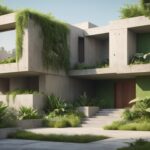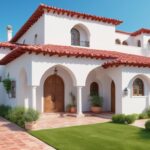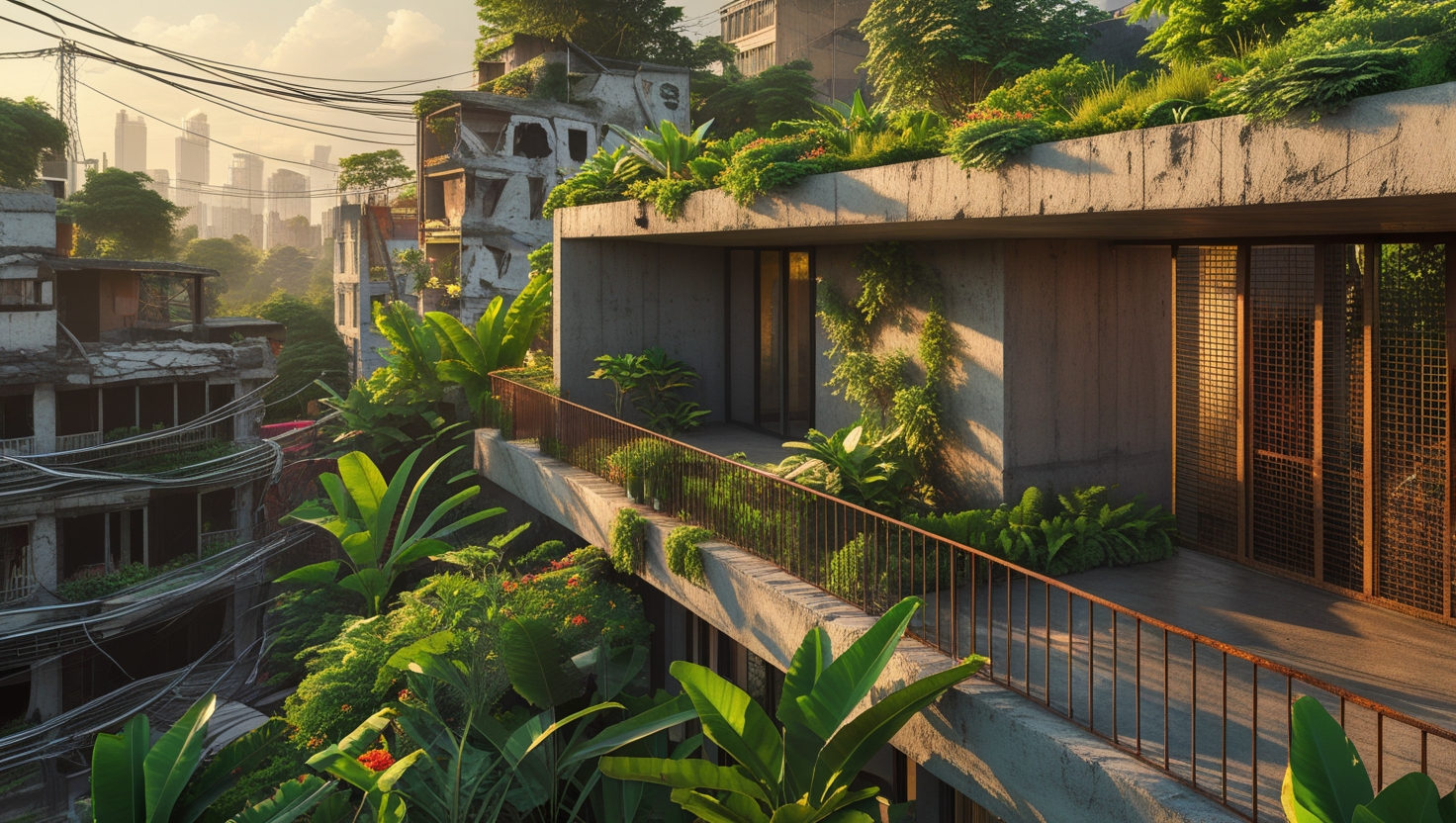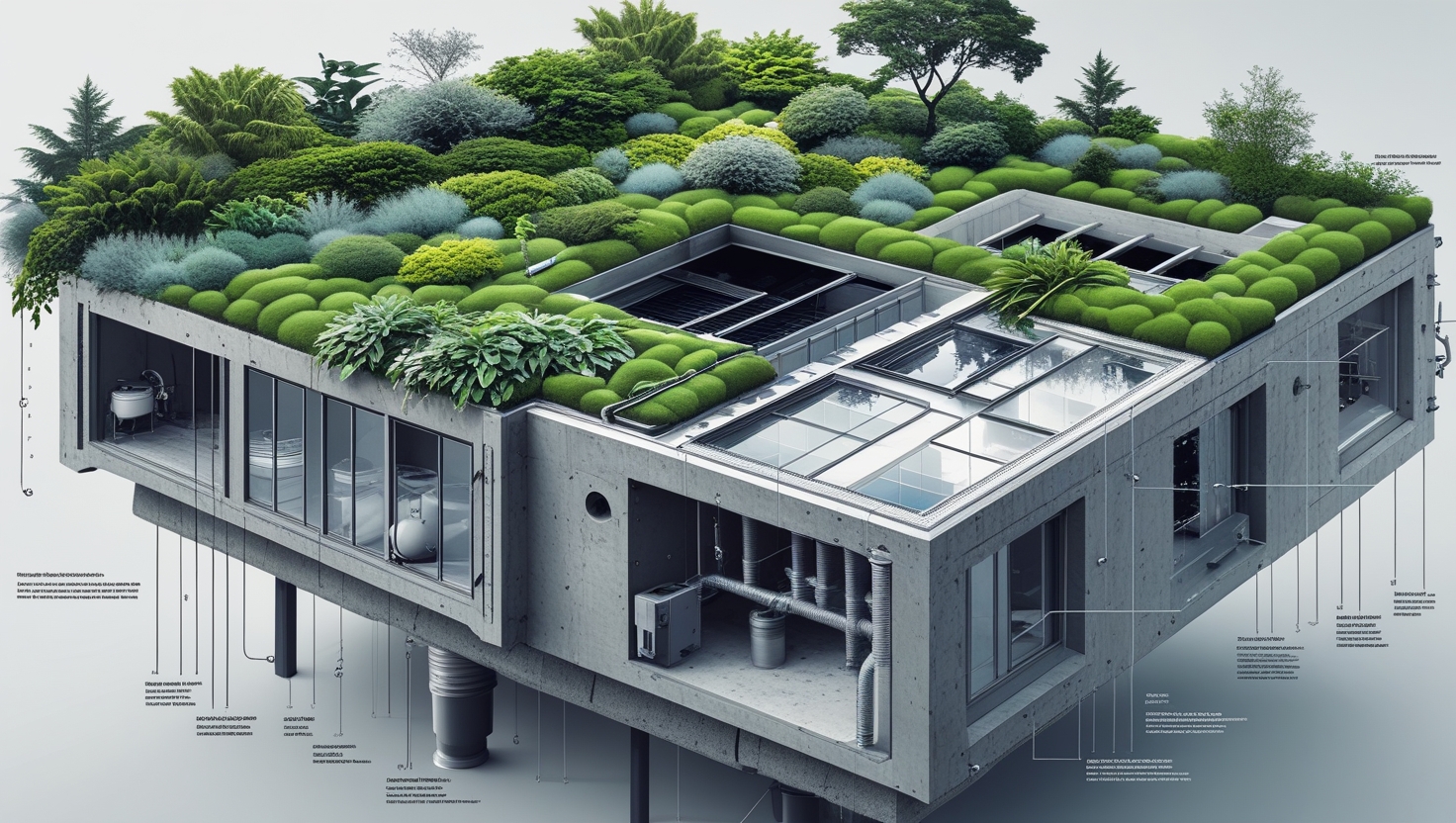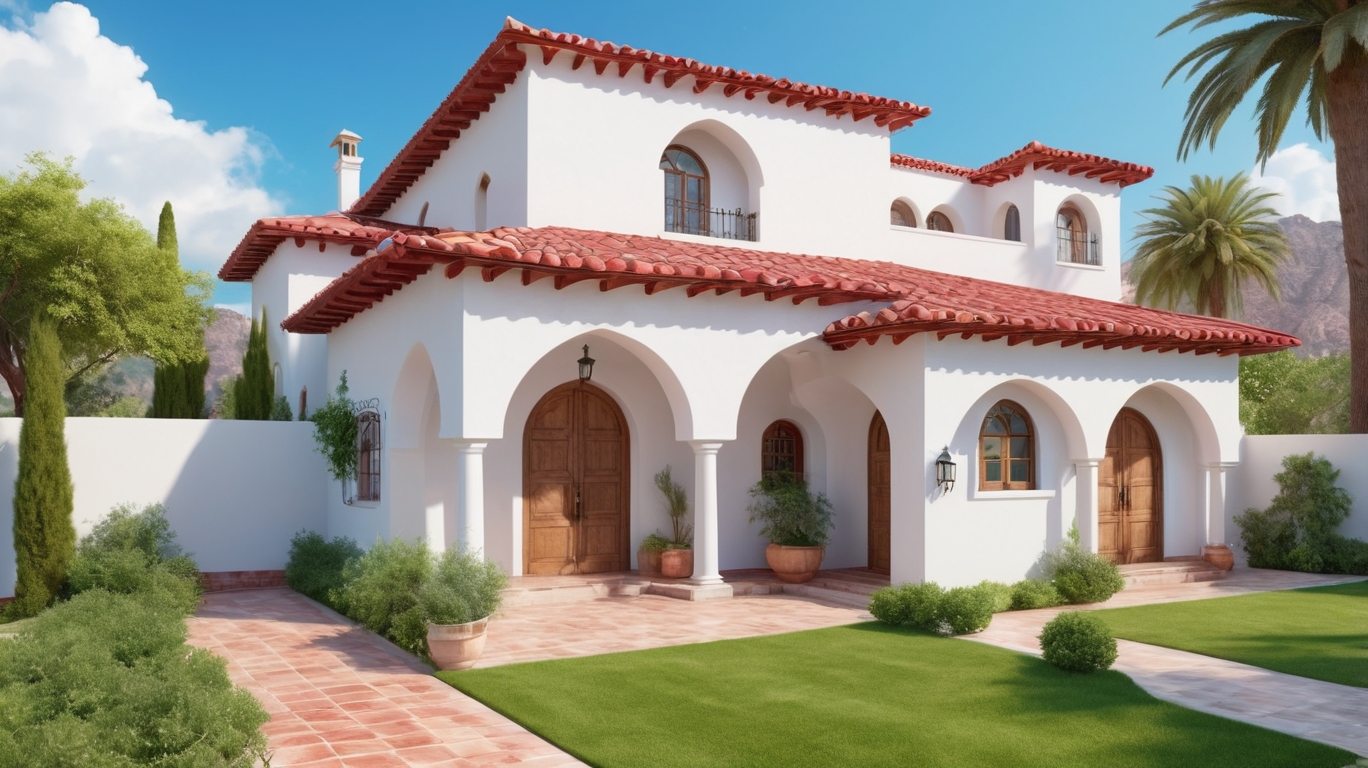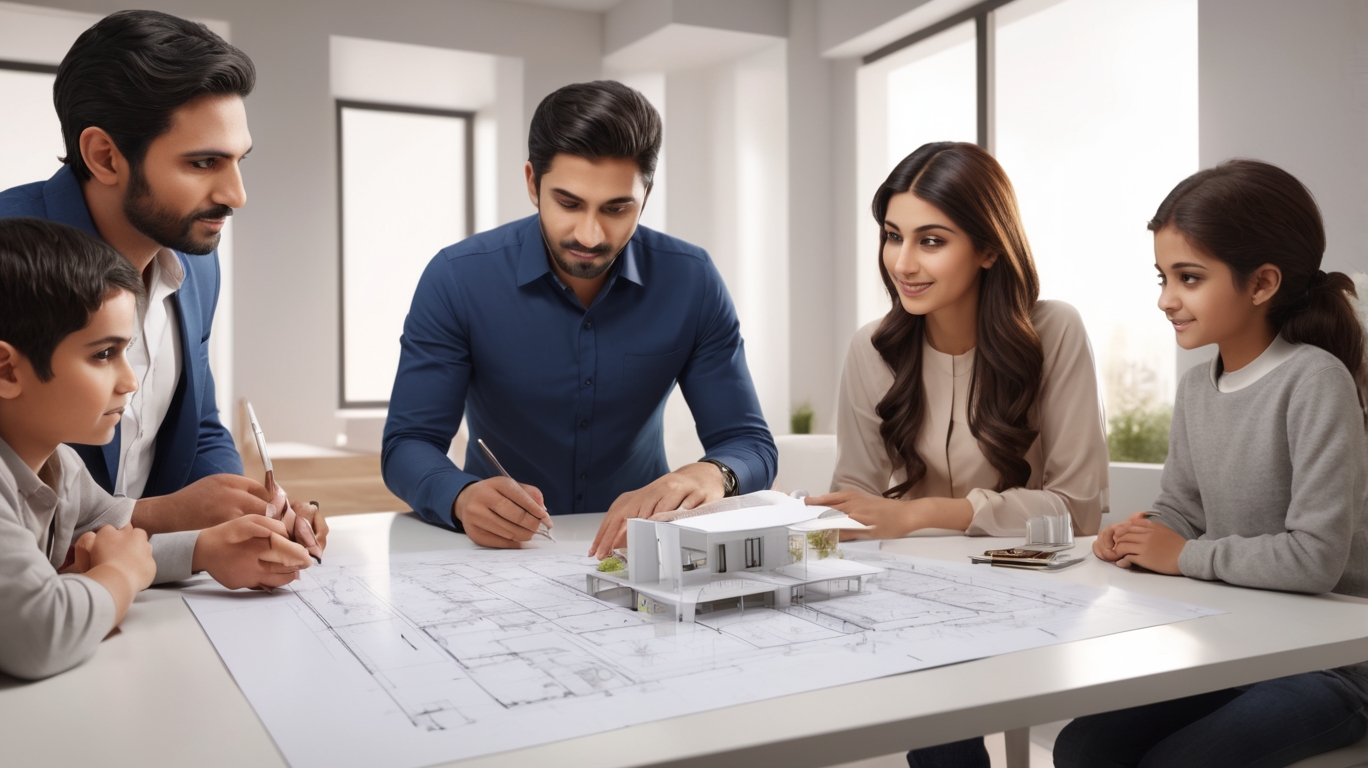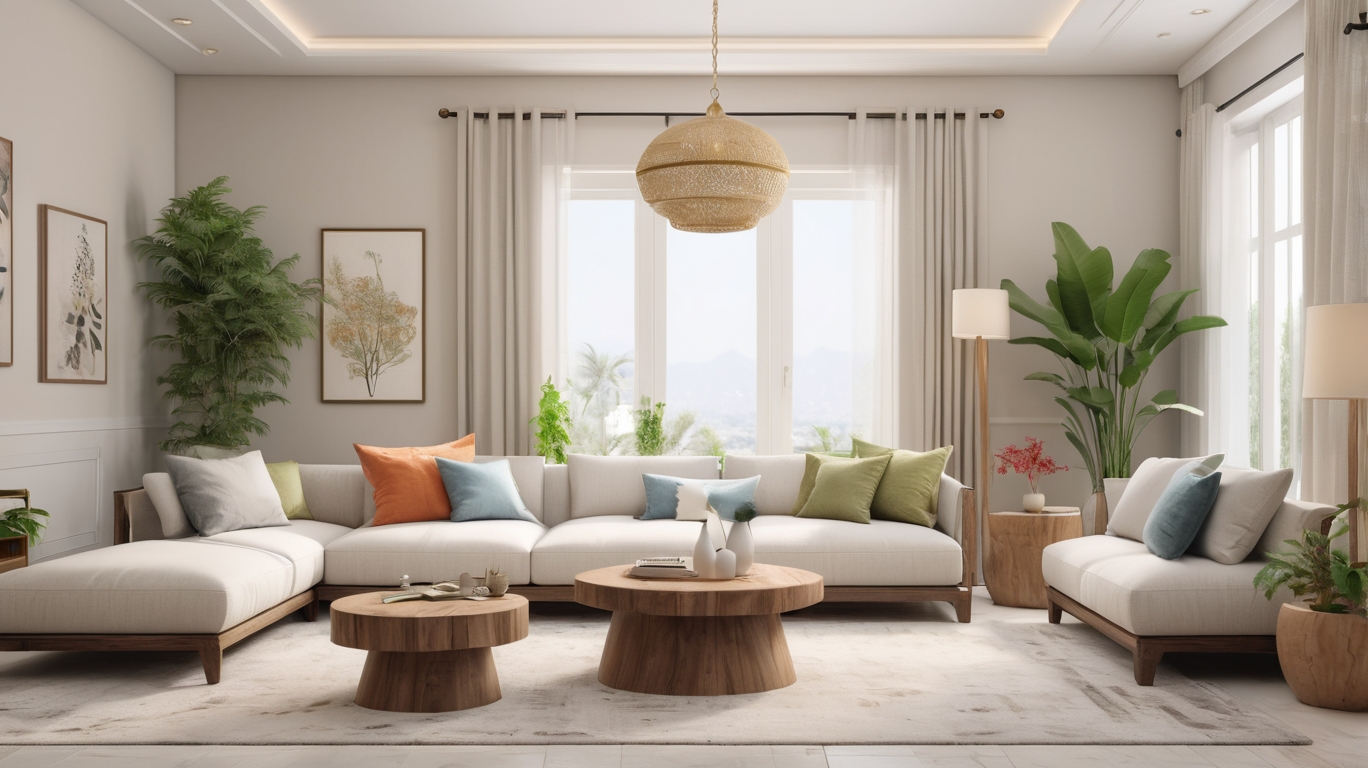Eco‑Brutalism: Blending Concrete & Green in Modern Indian Architecture
Introduction
In 2025, architecture across India and Pakistan is evolving into a more responsible, bold, and sustainable movement: Eco‑Brutalism. This trend is transforming our cities by integrating raw construction materials such as concrete with soft, natural elements like greenery, wood, and sunlight. Combining strength and sustainability, Eco‑Brutalism reflects the shifting architectural consciousness in South Asia.
Gone are the days when minimalism was the ultimate goal. Today, homeowners and architects are searching for homes that not only look striking but also support the environment and reduce energy consumption. This new approach blends function, beauty, and responsibility—all within the same design language.
What is Eco‑Brutalism?
Eco‑Brutalism is a hybrid design philosophy that balances two seemingly opposite ideas:
- Brutalist architecture – Recognized by its heavy use of concrete, exposed building elements, geometric forms, and raw finishes.
- Eco-conscious design – Featuring green roofs, natural light, vertical gardens, passive ventilation, and sustainable materials.
The goal is to soften the hardness of Brutalism with the natural beauty of ecological systems, creating homes and buildings that are both aesthetically powerful and environmentally responsible.
Why It’s Trending in South Asia
1. Adapting to Local Climates
India and Pakistan experience scorching summers and varying climates. The thick concrete walls in eco-brutalist homes provide insulation and maintain interior temperatures. Combined with elements like jaalis (perforated screens), green roofs, and passive cooling strategies, these homes are naturally climate-adaptive.
2. Urban Greening in Overcrowded Cities
South Asian megacities like Delhi, Lahore, and Mumbai suffer from poor air quality and dense construction. Eco-brutalism brings greenery into the heart of the city—through rooftop gardens, vertical plant walls, and integrated planters. These not only enhance air quality but also add visual softness to the hard lines of concrete.
3. Rising Environmental Awareness
With increasing education and climate awareness, families are now asking for:
- Low-energy homes
- Solar-ready rooftops
- Rainwater harvesting systems
- Natural construction materials
Builders and architects have responded by combining the raw aesthetics of brutalism with practical, green innovations.
Key Design Elements of Eco‑Brutalist Homes
Exposed Concrete Surfaces
Leaving walls and ceilings unpainted gives a raw yet artistic character to homes. Formwork patterns, rough textures, and visible support structures are intentionally retained. These materials are durable, low-maintenance, and suited to South Asian climates.
Vertical Gardens & Rooftop Greenery
- Living walls with native plants help insulate buildings.
- Rooftop gardens reduce heat absorption and create usable outdoor space.
- Integrated planters on balconies and stairwells help cool the interiors.
Passive Design Strategies
Eco‑Brutalist homes are energy efficient by design:
- Cross ventilation through aligned openings and open courtyards.
- Natural lighting via skylights and clerestory windows.
- Overhangs, brise-soleil, and pergolas for sun control.
Sustainable & Local Materials
- Recycled wood for doors and windows
- Bamboo rafters and panels
- Fly-ash cement and lime plaster
- Terrazzo floors made from construction waste
Using locally available materials reduces cost and environmental impact.
Examples of Eco‑Brutalism in South Asia
In India:
- Studio Lotus (Delhi): Combines heavy concrete structures with filtered light and interior courtyards.
- Sameep Padora’s Projects: Use of rammed earth, reclaimed bricks, and lime plasters.
In Pakistan:
- Bahria Enclave, Islamabad: Eco-brutalist houses with rooftop planting beds and concrete facades.
- Lahore Architects: Utilizing jaali screens, green terraces, and natural ventilation in 3 marla and 5 marla houses.
- Multan & Bahawalpur Farmhouses: Blending concrete forms with indigenous plants and earth-based walls.
Adapting to Plot Sizes and Budgets
Single Story Homes:
Even small homes can benefit from Eco‑Brutalism:
- Use cement plasters and recycled bricks for cost savings.
- Native plants need less water and upkeep.
- Open floor plans improve air circulation naturally.
3 Bedroom and 4 Bedroom House Layouts:
Ideal for nuclear families, eco-brutalist features like rooftop gardens, passive cooling, and skylights can be integrated without major cost increases.
15 Marla or Larger Homes:
- Multiple courtyards, shaded walkways, and solar integration
- Rainwater storage beneath terraces
- Outdoor living spaces framed in concrete and softened with plant life
3 Marla & 5 Marla House Designs:
- Use of shared walls to reduce material and energy loss
- Rooftop gardens for herbs or vegetables
- Terraces lined with flowering shrubs for privacy and beauty
Addressing Challenges
While Eco‑Brutalism offers many benefits, certain challenges require attention:
- Waterproofing of concrete is crucial for durability.
- Green wall systems must be properly designed to avoid water seepage.
- Skilled labor is needed to maintain aesthetic and structural quality.
- Regular maintenance of plants is essential to prevent decay or pest infestation.
NakshaNigar.com’s Contribution
NakshaNigar.com plays a leading role in promoting Eco‑Brutalism across Pakistan:
- Provides architect plans for house construction using eco-brutalist principles
- Offers 3D visualization services showing greenery integration
- Recommends sustainable materials suited to local climate zones
- Designs customized layouts: from 3 bedroom house layout to luxury 15 marla villas
Whether you’re looking to build your dream home or explore modern house designs that reflect both strength and softness, NakshaNigar.com offers expert solutions tailored to your needs.
Conclusion
Eco‑Brutalism is more than just an architectural style—it’s a philosophy. In a world battling climate change and urban sprawl, this movement bridges durability with nature, minimalism with responsibility.
In Pakistan and India, where concrete is the default and greenery is often an afterthought, this design approach provides the best of both worlds. It respects tradition, embraces innovation, and builds for the future.
From 3 marla to 15 marla house plans, from single story homes to multi-level urban apartments, Eco‑Brutalism adapts to every scale. It redefines how we think about beauty, sustainability, and space.






